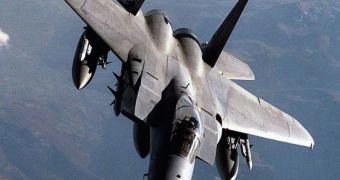For quite some time, scientists have been working long hours trying to figure out ways of fighting back global warming with the help of geoengineering, and of a lot of solutions have been brought forth.
Most of them have something to do with pumping various chemical compounds into the atmosphere, which are expected to act as some sort of an oversized sun visor and keep the planet from heating up even further.
Apparently, aerosols (i.e. fine solid particles or liquid droplets suspended in air or gas) could be efficient in cooling off the planet.
In case anyone was wondering, this theory has been proven time and time again by volcanic eruptions, as the clouds sent up into the air by such natural disasters usually lead to sudden drops in the temperatures recorded in the areas below them.
Still, one question remains: how exactly can these aerosols be made to reach the earth's atmosphere?
Of course, taking old planes and modifying them so as to serve this new purpose could be one option.
Dvice informs us that, in order to reach the required height, we would probably need to use either 28 supersonic B-1 bombers, or 133 F-15s (i.e. all-weather tactical fighters).
Anyhow, the costs for using the bombers would amount to $5 billion / €3.96 billion, whereas the ones for using the F-15s would skyrocket to $8.4 billion / €6.65 billion.
Speaking of rockets, rumor has it that asking them to help us fight global warming would result in costs of up to $390 billion / €309 billion on a yearly basis, so perhaps it is best to turn towards other options instead.
Naturally, there are some funkier ways of getting those aerosols into our atmosphere, but nobody can guarantee that these will actually work.
For example: using guns to shoot these fine particulates up in the air (an estimated $140 billion / €110 billion, as we would have to resort to military artillery), or maybe using one big hose to simply pump our way into a cooler planet (roughly $4 billion / €3.17 billion).
But then again, we could simply try and find ways of making a difference at ground level, push towards sustainability and cut down on the ecological footprint of the many industries out society has developed over the years.

 14 DAY TRIAL //
14 DAY TRIAL //